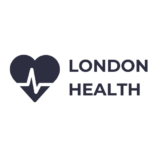Impetigo is much more common in children but it can occur in adults; it is a highly contagious condition that is caused by bacterial infection. There are two types of impetigo; these include bullous and non-bullous impetigo; non-bullous impetigo is much more common that bullous impetigo.
Causes of impetigo
Impetigo is caused by two different types of bacteria known as staphylococcus aureus and staphylococcus pyogenes. The condition may either be caused when the skin is broken by a scratch, cut or insect bite (primary impetigo) or as a result of the skin being broken by a different skin condition, such as eczema (secondary impetigo).
Symptoms of impetigo
Non-bullous impetigo: symptoms of this type of impetigo include the development of red sores on the skin, which then burst leaving behind a yellowy coloured crust; the crust then falls off leaving a red ring on the skin. The sores are usually itchy but they shouldn’t be painful; try not to scratch or touch the sores as this can cause them to spread to other parts of the body. In extreme cases, symptoms may also include inflamed glands and a soaring temperature.
Bullous impetigo: symptoms of bullous impetigo include the development of blisters that are filled with fluid; after a couple of days the blisters burst, leaving behind a thin yellow crust. The blisters should not be painful but the skin surrounding them will usually be itchy. More severe symptoms including swollen glands and a soaring temperature are more common in bullous impetigo than non-bullous impetigo.
Treating impetigo
Impetigo is usually treated quickly and effectively using topical antibiotics; usually the symptoms will fade within 7 days. In more severe cases, antibiotic tablets may also be prescribed.

